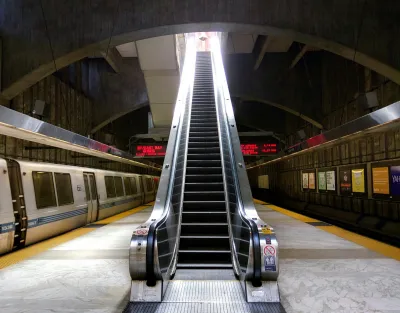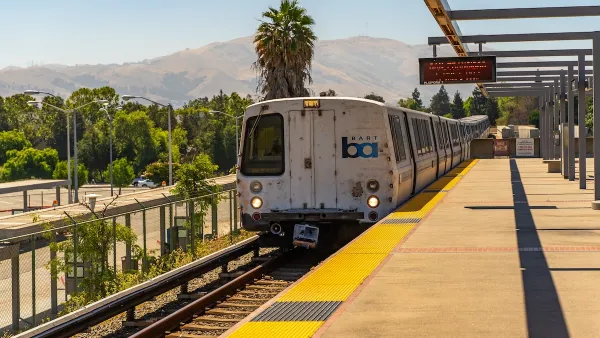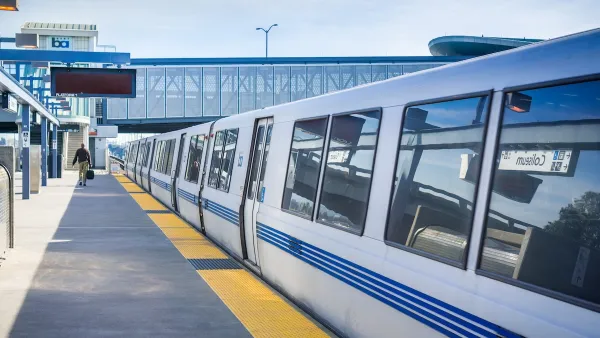Bay Area Rapid Transit, a hugely successful system pre-pandemic, is now struggling to close a massive projected budget gap, with no certain solutions on the table.

Once an agency with the nation’s highest farebox recovery ratio, San Francisco’s Bay Area Rapid Transit (BART) system now faces an uncertain future, writes Ricardo Cano in the San Francisco Chronicle.
With ridership remaining low, “In its worst-case scenario, BART would impose mass layoffs, close on weekends, shutter two of its five lines and nine of its 50 stations and run trains as infrequently as once per hour.” Even worse, “Those deep cuts, agency officials say, could lead to the demise of BART.” Cano outlines the system’s current state, noting that BART will run out of federal funding in January 2025, a situation much more severe for agencies like BART that rely heavily on fare revenue. While officials have proposed a variety of potential solutions, there is no long-term plan yet.
Cano points out that “A Bay Area without BART, however unimaginable, would further fragment public transit, worsen traffic congestion on highways and bridges, and erode the natural flow of a region so profoundly shaped by the rail system.”
BART General Manager Bob Powers says the agency has to change its revenue model. “Instead of relying mostly on fares, we must invert our funding formula to rely more heavily on subsidies and a sustainable source of revenue that recognizes ridership recovery will take years.” California transit agencies are asking for a state subsidy, while BART is pushing for a local ballot measure. But according to Cano, “Newsom’s January budget included $2 billion in cuts to transit projects with no subsidy, highlighting the challenges of securing a state bailout.”
FULL STORY: Could the Bay Area lose BART?

Analysis: Cybertruck Fatality Rate Far Exceeds That of Ford Pinto
The Tesla Cybertruck was recalled seven times last year.

National Parks Layoffs Will Cause Communities to Lose Billions
Thousands of essential park workers were laid off this week, just before the busy spring break season.

Retro-silient?: America’s First “Eco-burb,” The Woodlands Turns 50
A master-planned community north of Houston offers lessons on green infrastructure and resilient design, but falls short of its founder’s lofty affordability and walkability goals.

Test News Post 1
This is a summary

Analysis: Cybertruck Fatality Rate Far Exceeds That of Ford Pinto
The Tesla Cybertruck was recalled seven times last year.

Test News Headline 46
Test for the image on the front page.
Urban Design for Planners 1: Software Tools
This six-course series explores essential urban design concepts using open source software and equips planners with the tools they need to participate fully in the urban design process.
Planning for Universal Design
Learn the tools for implementing Universal Design in planning regulations.
EMC Planning Group, Inc.
Planetizen
Planetizen
Mpact (formerly Rail~Volution)
Great Falls Development Authority, Inc.
HUDs Office of Policy Development and Research
NYU Wagner Graduate School of Public Service




























